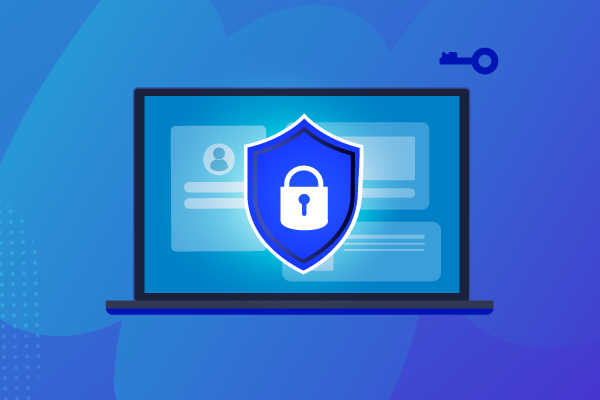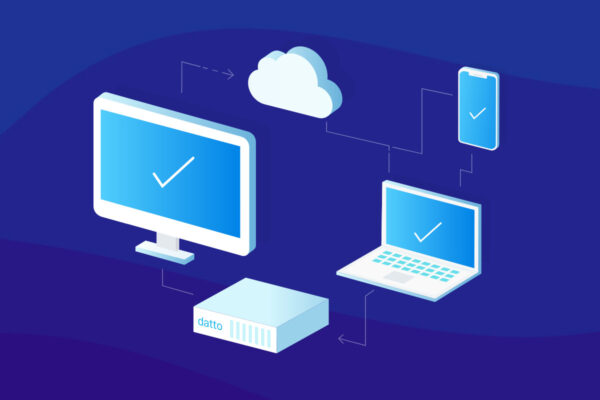What Is Desktop Virtualization
Keeping up with rapidly transforming technology often puts small and medium-sized businesses (SMBs) in a tight spot. Continuously incorporating new organizational and technological changes is not an easy task. Many small businesses struggle to set up additional machines with the latest software and operating systems for new employees.
Desktop virtualization can help businesses conduct a smooth onboarding process for new employees while reducing costs. This helps save the time and effort otherwise used to maintain and set up traditional desktop computers to match the requirements of the expanded workforce.
What is desktop virtualization?
Desktop virtualization includes the replacement of traditional physical desktop computing environments with virtual computing environments. It helps create and store multiple user desktop environments on a single host, residing in the cloud or a data center.
Desktop virtualization is the one-stop solution to many problems that organizations face today, including regulatory compliance, security, cost control, business continuity and manageability.
Types of desktop virtualization
The three most popular deployment models of desktop virtualization are:
Virtual Desktop Infrastructure
A virtual desktop interface (VDI) uses host-based virtual machines (VMs) to run the operating system. It delivers non-persistent and persistent virtual desktops to all connected devices. With a non-persistent virtual desktop, employees can access a virtual desktop from a shared pool, whereas in a persistent virtual desktop, each user gets a unique desktop image that can be customized with data and applications. VDI gives each user their virtual machine and supports only one user per operating system.
Remote Desktop Services
Remote desktop services (RDS) or remote desktop session host (RDSH) are beneficial where only limited applications require virtualization. They allow users to remotely access Windows applications and desktops using the Microsoft Windows Server operating system. RDS is a more cost-effective solution, since one Windows server can support multiple users.
Desktop-as-a-Service (DaaS)
Desktop-as-a-service (DaaS) is a flexible desktop virtualization solution that uses cloud-based virtual machines backed by a third-party provider. Using DaaS, organizations can outsource desktop virtualization solutions that help a user to access computer applications and desktops from any endpoint platform or device.
Choosing the right desktop virtualization solution
To understand which type of solution suits your business, you should:
Identify the costs associated with setting up the infrastructure and deployment of virtual desktops
Determine whether you have the required resources and expertise to adopt these solutions
Determine the infrastructure control capabilities of the virtualization providers
Determine the level of elasticity and agility you want in your desktop virtualization solution
Why do you need desktop virtualization for your business?
Beyond saving money and time, desktop virtualization offers various other benefits for organizations. These include:
Better security and control
Virtual desktops store data in a secure environment and allow central management of confidential information to prevent data leaks. Desktop virtualization solutions restrict the users from saving or copying data to any source other than its servers, making it hard to get crucial company information out.
Reliable virtualization solution providers offer multiple layers of cloud safeguards such as the highest quality encryption, switches, routers and constant monitoring to eliminate threats and protect users’ data.
Ease of maintenance
Unlike traditional computers, virtual desktops are far easier to maintain. All end-users don’t need to update or download the necessary programs individually since these are centrally managed by the IT department.
IT admin can also easily keep track of the software assets through a virtual desktop. Once a user logs off from the virtual desktop it can reset, and any customizations or software programs downloaded on the desktop can be easily removed. It also helps prevent system slowdown caused by customizations and software downloads.
Remote work
Since virtual desktops are connected to a central server, provision for new desktops can be made in minutes so they are instantly available to new users. Instead of manually setting up a new desktop for new employees, IT admins can deploy a ready-to-go virtual desktop to the new user’s device using desktop virtualization. The users can access and interact with the operating systems and applications from virtually anywhere with an internet connection.
Resource management
Resources for desktop virtualization are located in a data center, which allows the pooling of resources for better efficiency. With desktop virtualization, IT admins can maximize their hardware investment returns by consolidating the majority of their computing in a data center. This helps eliminate the need to push application and operating system updates to the end-user machines.
In turn, organizations can deploy less expensive and less powerful devices to end-users since they are only used for input and output. IT departments can save money and resources that would otherwise be used to deploy more expensive and powerful machines.
Reduced costs
Desktop virtualization solutions help shift the IT budget from capital expenses to operating expenses. Organizations can prolong the shelf life of their traditional computers and other less powerful machines by delivering compute-intensive applications via VMs hosted on a data center.
IT departments can also significantly save costs on software licensing as you only need to install and update the software on a single, central server instead of multiple end-user workstations. Savings on energy bills, capital costs, licensing costs, IT support costs and upfront purchasing costs can reduce the overall IT operating costs by almost 70%.
Increased employee productivity
Employees’ productivity may increase when they can easily access the organization’s computing resources from any supported device, anywhere and anytime. Employees can work in a comfortable environment and still be able to access all applications and software programs that would otherwise only be available on their office desktops. Desktop virtualization allows for a seamless and faster employee onboarding process, productivity and provisioning for remote workers.
Improved flexibility
Desktop virtualization reduces the need to configure desktops for each end-user. These solutions help organizations manage and customize desktops through a single interface and eliminate the need to personalize each desktop. Desktop virtualization lets the administrator set permissions for access to programs and files already stored on the central server with just a few clicks. Employees can access the required programs from anywhere, offering them better work flexibility.
Simplify operations with Datto
Desktop virtualization solutions offer a centralized infrastructure that helps organizations save energy, resources, time and physical space. Datto’s cloud-based, reliable solutions can help your business grow and get a competitive advantage. Contact us today to learn more about how we can help you.




